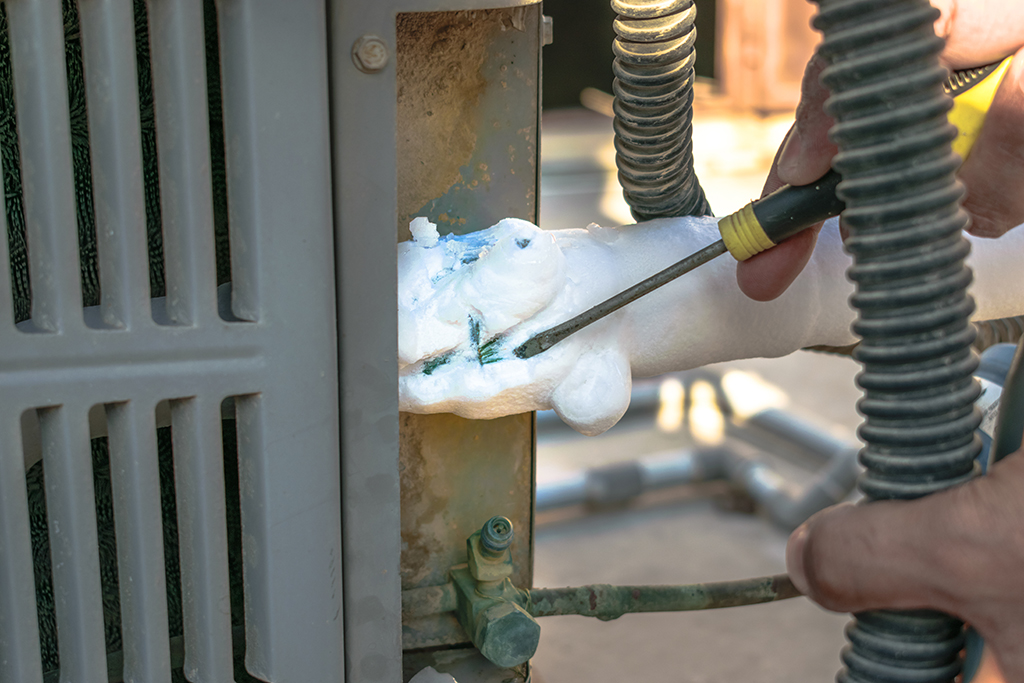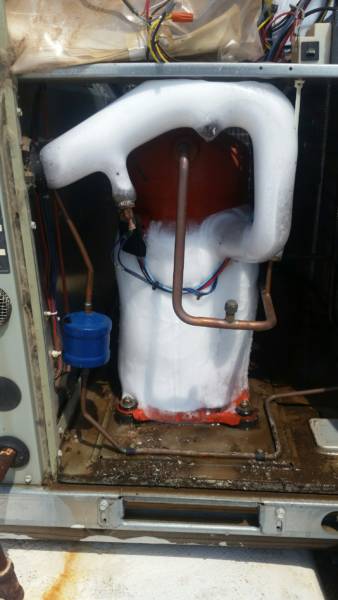Steps to Take If My AC Pipe Is Frozen - Quick Solutions for Unfreezing
Schedule ServiceThis post listed below in relation to Air Conditioner Frozen? How To Fix your Frozen AC Line is seriously entertaining. Give it a go and make your own personal findings.

Introduction
Uncovering that your air conditioner pipe is iced up can be concerning, specifically throughout warm summertime when you rely upon your a/c one of the most. Comprehending what to do in such a circumstance is vital to avoid additional damage to your air conditioning system and guarantee your comfort inside.
Recognizing the Causes
A number of factors can add to the freezing of an AC pipeline. Understanding these reasons can help you resolve the problem properly.
Lack of Airflow
One usual reason for an icy air conditioning pipeline is inadequate airflow. When the air flow over the evaporator coil is limited, it can trigger the coil to drop below freezing temperature level, bring about ice formation on the pipe.
Reduced Refrigerant Levels
Inadequate cooling agent degrees in your a/c system can likewise lead to an icy pipeline. Reduced cooling agent degrees can create the stress in the system to go down, bring about the freezing of moisture on the evaporator coil.
Cold Weather Conditions
In chillier environments, freezing temperature levels outside can add to the cold of AC pipes. If your AC unit is not correctly insulated or if there are leaks in the ductwork, cold air can penetrate the system, creating the pipeline to freeze.
Dirty Air Filters
Dirty or clogged air filters can limit air movement in your a/c system, resulting in various concerns, consisting of a frozen pipeline. It's important to replace or cleanse your air filters frequently to ensure appropriate airflow and protect against ice buildup.
Indicators of a Frozen Air Conditioning Pipe
Identifying the indicators of a frozen air conditioner pipe is critical for timely activity.
Minimized Airflow
If you discover a substantial reduction in air flow from your vents, it could indicate an icy pipeline.
Ice Buildup on the Pipe
Noticeable ice build-up on the refrigerant line or the evaporator coil is a clear indication of a frozen a/c pipe.
Odd Sounds from the Unit
Uncommon noises, such as hissing or gurgling, coming from your air conditioning unit can signal that there's ice present on the pipeline.
Immediate Actions to Take
When confronted with a frozen AC pipeline, it's vital to act promptly to avoid further damages to your cooling system.
Turning off the air conditioner
The very first step is to shut off your air conditioning system to avoid the system from running and aggravating the problem.
Looking for Blockages
Examine the location around the indoor system for any kind of obstructions that may be obstructing air movement, such as furniture or curtains.
Thawing the Pipe
You can make use of mild methods like placing towels soaked in warm water around the icy pipeline to assist thaw it slowly.
Safety nets
Taking preventive measures can aid stay clear of future events of a frozen air conditioner pipeline.
Routine Maintenance Checks
Schedule regular maintenance checks with a professional HVAC specialist to guarantee that your AC system is running efficiently.
Transforming Air Filters
Consistently change or clean your air filters to stop air flow restrictions and keep ideal performance.
Protecting Exposed Pipes
If your AC pipelines are exposed to cool temperatures, take into consideration insulating them to avoid cold during cold weather.
Seeking Professional Help
If DIY techniques stop working to resolve the problem or if you're not sure concerning how to proceed, it's finest to look for aid from a qualified HVAC service technician.
When DIY Methods Fail
If your efforts to thaw the pipeline or address various other problems are not successful, it's time to call a specialist.
Relevance of Hiring a Professional HVAC Technician
A certified HVAC technician has the proficiency and tools essential to identify and repair problems with your a/c system safely and successfully.
Conclusion
Taking care of an icy air conditioning pipeline can be an aggravating experience, however understanding how to respond can aid decrease damages and recover comfort to your home. By understanding the reasons, identifying the indicators, and taking timely action, you can properly deal with the concern and prevent future events.
G UP? HOW TO FIX IT?
It happens all over America. And the rest of the world probably. It’s the hottest day ever and for some darn reason your AC isn’t cooling the house. You fiddle with the thermostat to try and fix the problem. Nada. All you can do now is go outside and check the AC unit. You make your way there and find your air conditioner unit is frozen! But how?
In this post we’ll cover how you can tell that your air conditioner has frozen (other than the obvious reasons), what could have caused the freeze, and some of the things you can do about your AC freezing up. And if you have a frozen heat pump condenser, read our blog about it to learn what to do! But remember, it is always best to avoid your AC freezing up with an AC tune up. And if you are moving into a home, it's critical to get HVAC inspection so that you are aware of an AC problems before you move in.
Keep reading and you may be able to fix the frozen AC yourself. If you can’t, call an HVAC specialist. If you live in Maryland, call SuperTech HVAC for AC repair. We’ll take care of it.
How Does An Air Conditioning Unit Work?
How you probably imagine an AC works is wrong. Contrary to popular belief, an AC system does not inject cool air into a building. Instead, it removes the heat from inside and transfers it outside. Cool huh? (Pun intended).There are 4 major components among the 3 stations of an air conditioning system: the evaporator coil, the compressor, the condenser, and the refrigerant – a special chemical that links everything together through a closed loop system.
Station 1:
Warm indoor air is sucked into the return vent, through a filter, and blows over the evaporator coil. The heat is absorbed into the cold refrigerant, turning it from liquid to gas. The air, which is now cool, is blown back into the home to areas that your thermostat, i.e. you, has decided.
Station 2:
The refrigerant makes its way outside the house to the compressor, which squeezes the warm refrigerant, raising its gaseous temperature even more.
Station 3:
When the super hot vapor refrigerant reaches the condenser, the last step, the heat is expelled and absorbed into the outdoor air. The refrigerant instantly cools, which changes it from gas back to liquid form. The cold liquid refrigerant is now ready to return to station 1 and repeat the process.
Is Your AC Freezing Up? Here Are The Signs:
As you may have guessed, your air conditioner unit freezing up on a hot day is not normal.
If this happens, there's no need to panic. Often the issue can be solved with a little troubleshooting. If the AC unit is left frozen for too long however, you may find yourself with a bigger problem.
First things first, how do you know your AC is frozen?
Well, the obvious sign is the ice on your refrigerant line-set pipe. Simply check between your outdoor AC unit and your home's exterior wall to see whether your AC line frozen.
You might also have a frozen evaporator coil. This one's not as easy to check. You'll need to open a panel on the indoor unit to inspect. Don't do this unless you're handy. If you aren't, call an HVAC pro like SuperTech HVAC or you may damage something in the process.

I hope you enjoyed our part on Have a Frozen AC Line? Here’s How to Fix It. Thanks for spending some time to read our piece. Loved our post? Please share it. Help another person find it. We appreciate reading our article about What Do I Do If My AC Pipe Is Frozen.
Call Today